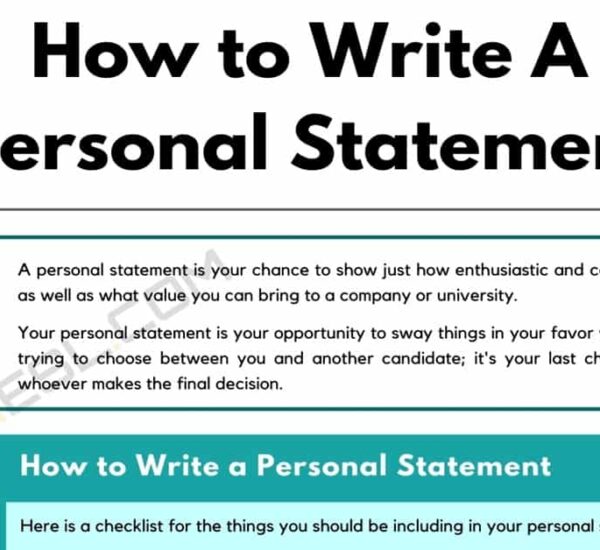Studying abroad is a dream for many students. It’s a chance to experience a new culture, learn a new language, and gain valuable skills and knowledge. However, for many students, the dream of studying abroad can seem out of reach due to financial constraints.
If you’re one of those students, don’t give up hope! There are ways to study abroad even if you don’t have the finances. In this blog post, we will discuss some tips on how to make your dream of studying abroad a reality.
Research scholarships and grants
One of the best ways to fund your study abroad program is through scholarships and grants. Many universities and organizations offer scholarships to students who want to study abroad.
These scholarships can cover a portion or even all of the costs of the program, including tuition fees, living expenses, and travel expenses. You can start your search by researching online, checking with your school’s study abroad office, or consulting with a study abroad advisor.
Look for low-cost programs
Some study abroad programs can be very expensive, but there are also many affordable options. Look for programs that offer low-cost tuition fees, such as those in developing countries, or those that offer scholarships and other financial assistance.
You can also consider programs that offer work-study opportunities or internships, which can help you earn some money while you study abroad.
Consider crowdfunding
Crowdfunding is a relatively new way of raising money for various projects, including studying abroad. You can create a crowdfunding campaign on a platform like GoFundMe or Kickstarter and share it with your family, friends, and social media followers.
Be sure to explain why you want to study abroad, how it will benefit you, and how much money you need to make your dream a reality. Many people are willing to contribute to a good cause, and you might be surprised at how much support you can get.
Explore student loans
While taking out student loans is not ideal, it can be an option if you’re determined to study abroad. Some banks and financial institutions offer student loans specifically for studying abroad.
These loans may have lower interest rates than regular student loans, and they can be used to cover tuition fees, living expenses, and travel expenses. However, be sure to research and compare different loan options before making a decision.
Consider part-time work
If you’re already working part-time, consider picking up additional work to save up for your study abroad program. You can also look for part-time work opportunities in your destination country, such as tutoring, babysitting, or working in a restaurant.
Working part-time can help you earn some extra money, and it can also be a great way to immerse yourself in the local culture.
Comparison of Low-Cost Study Abroad Scholarships Programs
Here is a table comparing some of the most popular low-cost study abroad programs:
| Program | Location | Duration | Cost | Notes |
|---|---|---|---|---|
| Erasmus+ | Europe | 3-12 months | Free | Available for EU citizens only |
| Fulbright Program | Various countries | Varies | Varies | Offers a range of scholarships and grants for U.S. citizens |
| Chevening Scholarship | Various countries | 1 year | Free | Offers full funding for master’s degree programs in the UK for international students |
| DAAD Scholarship | Germany | Varies | Free | Offers a range of scholarships for international students to study in Germany |
| Joint Japan World Bank Graduate Scholarship Program | Various countries | 2 years | Free | Offers full funding for master’s degree programs in development-related fields for developing country nationals |
| Confucius Institute Scholarship | China | 1-2 years | Free | Offers full funding for Chinese language and culture studies for international students |
| Endeavour Leadership Program | Australia | Varies | Free | Offers a range of scholarships for international students to study in Australia |
Please note that the costs listed are estimates and may vary depending on a variety of factors, including the specific program, your country of origin, and your intended length of stay.
Additionally, there may be additional costs associated with studying abroad, such as travel expenses, visa fees, and living expenses, that are not included in the program costs.
Comparison of Top 10 Low Tuition Fee Study Abroad Countries
Here are a table comparing the top 10 low tuition fee study abroad countries:
| Country | Average Tuition Fees (per year) | Currency | Language of Instruction | Notes |
|---|---|---|---|---|
| Germany | €0-€20,000 | Euro | German | Some programs may require a small administrative fee |
| France | €200-€3,000 | Euro | French | Tuition fees for non-EU students may be higher |
| Spain | €600-€2,400 | Euro | Spanish | Tuition fees may vary by region and program |
| Italy | €900-€4,000 | Euro | Italian | Tuition fees may vary by program and level of study |
| Taiwan | $3,000-$4,500 | New Taiwan Dollar | Mandarin Chinese | Offers a range of English-taught programs |
| South Korea | $2,000-$6,000 | South Korean Won | Korean, English | Tuition fees may vary by program and level of study |
| Mexico | $1,000-$5,000 | Mexican Peso | Spanish | Tuition fees may vary by program and level of study |
| Argentina | $600-$5,000 | Argentine Peso | Spanish | Tuition fees may vary by program and level of study |
| Poland | €1,000-€4,000 | Euro | Polish | Tuition fees may vary by program and level of study |
| Czech Republic | €0-€4,000 | Czech Koruna | Czech, English | Some programs may require a small administrative fee |
Please note that the costs listed are estimates and may vary depending on a variety of factors, including the specific program, your country of origin, and your intended length of stay.
Additionally, there may be additional costs associated with studying abroad, such as travel expenses, visa fees, and living expenses, that are not included in the tuition fees.
Conclusion
Studying abroad is a valuable experience that can have a significant impact on your personal and professional development. Don’t let financial constraints hold you back from pursuing your dream. By researching scholarships, looking for low-cost programs, considering crowdfunding, exploring student loans, and working part-time, you can make your dream of studying abroad a reality. Remember, where there’s a will, there’s a way!


